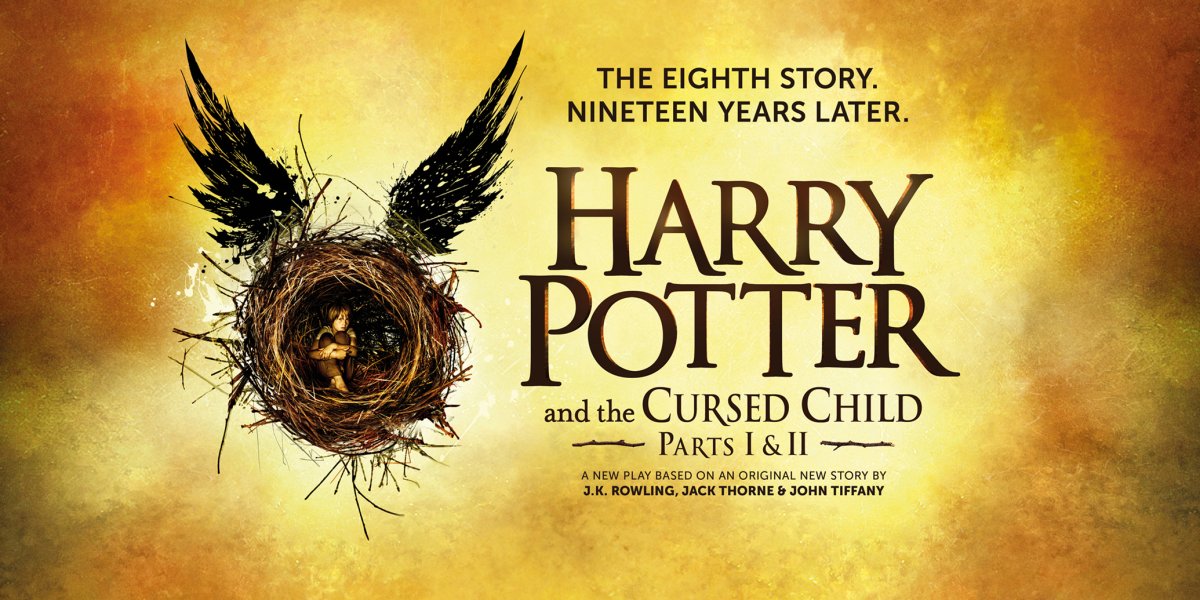
Harry Potter is a name known by many people throughout the world. The seven book series written by J.K. Rowling sold over 450 million copies; the eight movies following the series brought in over $10 billion in sales. Personally, I was upset walking out of “Harry Potter and the Deathly Hallows: Part 2” as I said goodbye to a huge part of my childhood. In July of 2016, Harry Potter came back. On Rowling’s and Potter’s shared birthday, “Harry Potter and the Cursed Child: Parts One and Two” was released as a script for the play that is currently playing at the Palace Theatre in London. This special rehearsal edition script gave me deja-vu as I read about Albus Potter, Harry’s second son. And while the new story will put you on the edge of your seat, there are some things I found not-so-great.
“The Cursed Child” is a play based on a new story by J.K. Rowling, John Tiffany and Jack Thorne. A four act play, the script looks into the lives of the “Harry Potter” protagonist’s children. There has been a lot of controversy regarding the fact that “The Cursed Child” was published as a play script, not a novel. Many fans did not understand why it was a script, and why Rowling herself did not write the play. The play was based on a story written by Rowling, Tiffany and Thorne, but the play was solely written by Thorne. The script shows a different writing technique from the original series, which was written in prose. That fact may confuse readers who are more accustomed to Rowling’s style.
However, these controversies did not seem to change the minds of dedicated Potterheads. Across the world. The night of the release, bookstores were filled with fans excitedly awaiting the release of yet again another story about the magic world. The night was featured on Snapchat, showing fans expressing their love for the series.
The play features the infamous characters Harry Potter, Hermione Granger-Weasley, Ron Weasley and many other icons that embodied the series. However, the play revolves around Albus Potter. Albus has never grown accustomed to the fame of his father and rebels against the constant spotlight, especially after he is sorted into Slytherin House. He also befriends Scorpius Malfoy, the son of Harry’s nemesis Draco Malfoy. These acts of rebellion cause Harry to feel the need to fix his son’s life. Harry does not come off as a good father, and seems only interested in what he believes. The boy who lived is now a father on the other side of the mischief. In the play, Harry has to enforce punishment, while in the books, he was the one getting into trouble. This new, awkward dad-version of Harry Potter was vastly different from the young, adventurous one.
With that being said, throughout the play, there are various scenes and characters that appear from the old books. The Triwizard Tournament is featured, Dolores Umbridge shows up for a scene or two, and some people rise from the dead. It may be confusing to read this play without prior knowledge of the novels or the movies.
Through the course of the play, James and Lily Potter, the son and daughter of Harry and Ginny, are rarely mentioned. The lack of character development in these roles and the dominance of Albus in this play is somewhat disappointing. Hagrid, who is alive at this time, virtually has no role in the play. He is only shown in flashbacks, and he is not used as a mentor to the students, as he was to Harry and his friends before. There is also not a lot of run-ins with goblins, trolls, or any mystical creatures. Because it is a play, it cannot contain too much detail in a couple of hours. And although the play wasn’t perfect, my adrenaline pumped throughout the story, especially when a centaur chased students out of the Forbidden Forest.
Whether it be a novel or a script, Rowling creates stories that are hard to put down. With twists and turns you would never expect, The Cursed Child is a must read, Potterhead or not.
